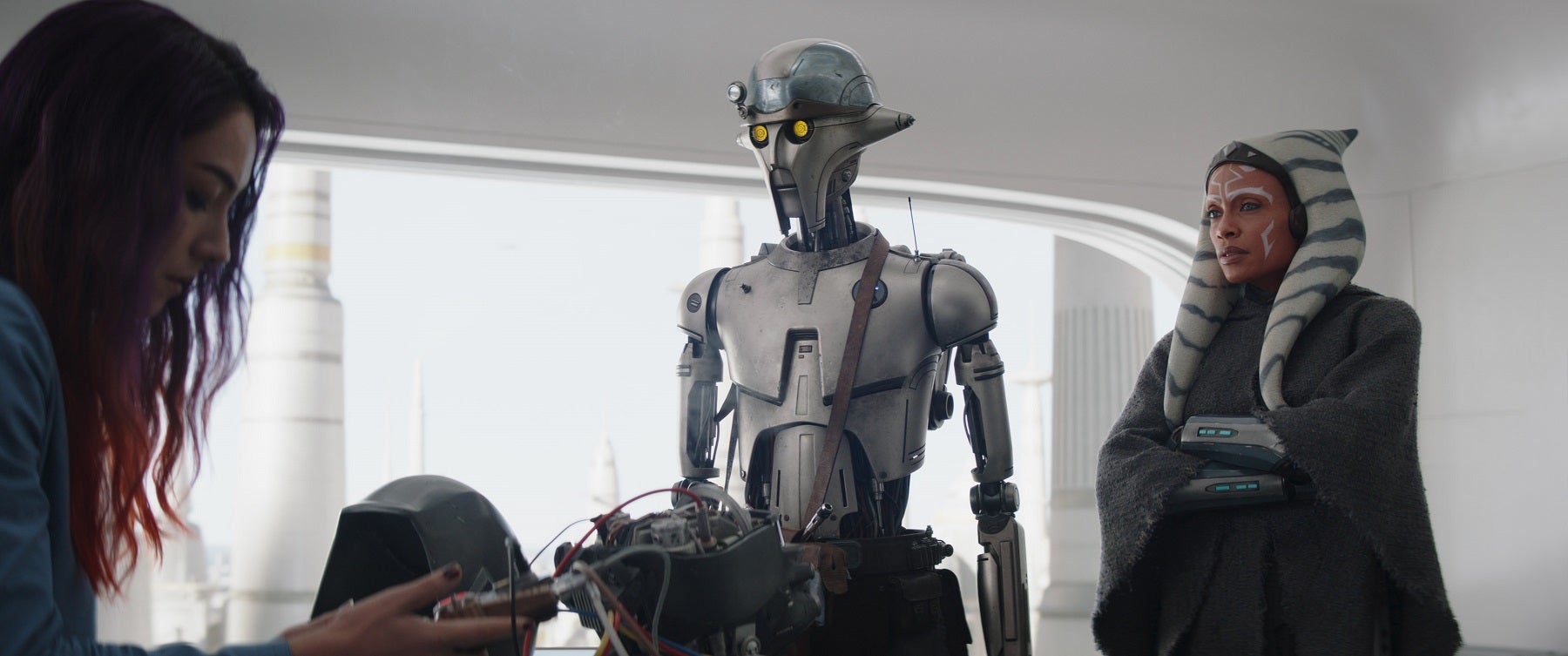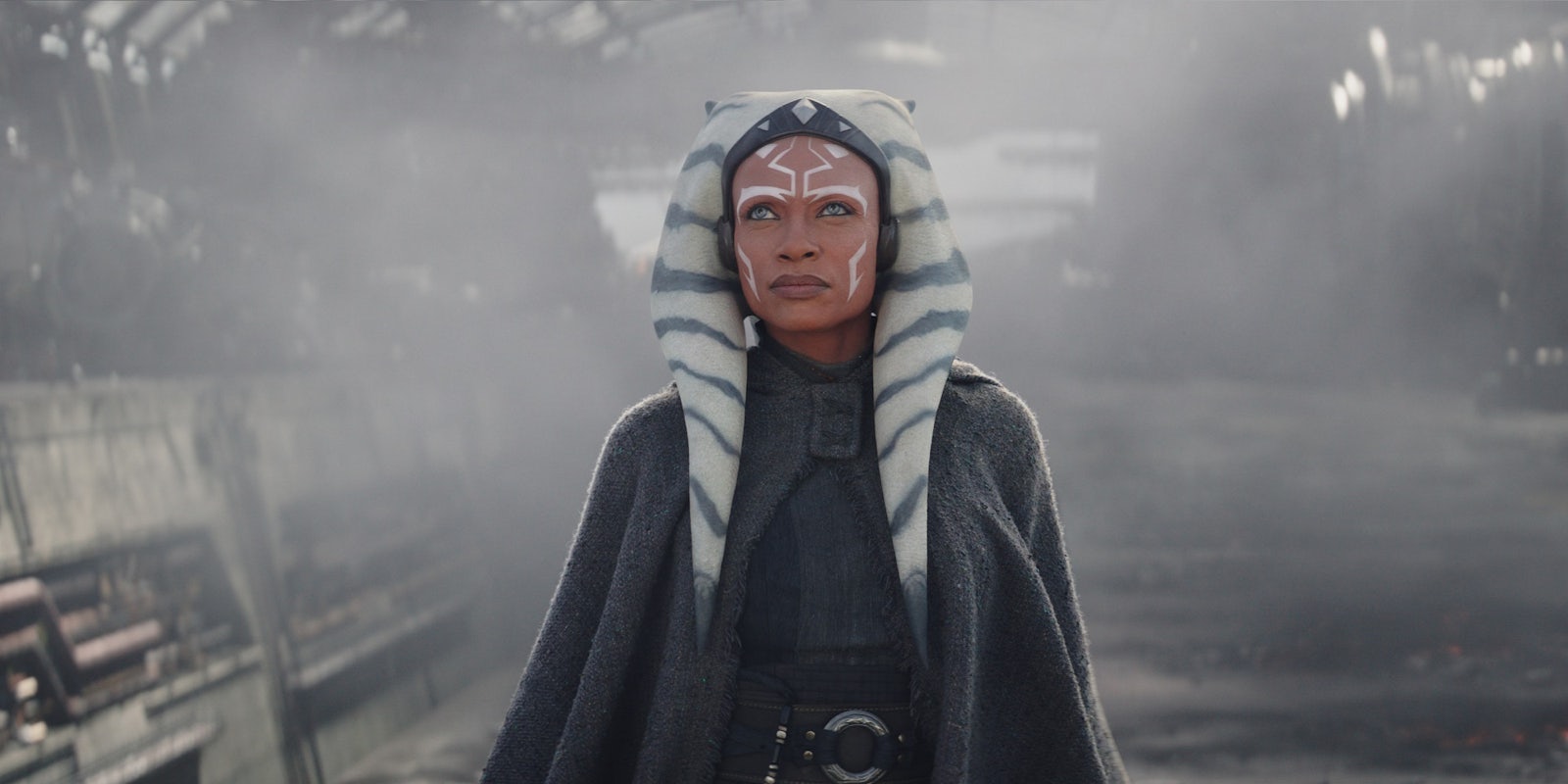It’s unfair to say that nothing happens in Ahsoka. Technically, events occur. Yet the pace is so lethargic that on a structural level, it feels like the TV version of someone padding out an essay to reach their word count.
During conversation scenes, characters will slowly and carefully enunciate their dialogue, then take a thoughtful pause. The camera then cuts to another character, who robotically delivers their own line before pausing as well.
It’s a bafflingly unnatural way to shoot dialogue – especially exposition, where the typical strategy is to speed-run the necessary info. So far I’ve seen critics joke that Ahsoka‘s cast seem stoned or concussed. But this level of stiltedness is only achievable through the combined forces of bad acting, writing, direction and editing all at once.

Ahsoka‘s pacing issues aren’t limited to the talky scenes. The action sequences are also riddled with tension-sapping pauses like someone just hit the snooze button mid-fight. Episode 3’s space chase is the only truly competent action scene so far. Coincidentally, it’s also the first time Rosario Dawson resembles the Ahsoka of the animated shows.
Elsewhere she spends a lot of time standing around with her arms folded, serenely surveying nearby props and characters. She embodies the show’s defining attitude to pacing: Linger on empty space for as long as possible.
Why Ahsoka’s pacing is so bad
There’s a lot of discourse in Star Wars fandom about whether certain sequences in The Last Jedi (and lately Andor) are “pointless” because they don’t directly serve the plot. This plot-focused mindset is popular among CinemaSins-style critics, dismissing the importance of atmosphere, symbolism, character development, and thematic storytelling.
In some ways, Ahsoka is the ideal show for this kind of audience. Working from a bare-bones, exposition-heavy script, almost every scene ties into the main plot. Aside from a couple of moments like Sabine Wren hanging out with her lothcats, there’s very little scene-setting or interesting visual world building.
The result is a damning illustration of the wrong kind of empty space.
Ahsoka’s pacing sucks because, on a minute-by-minute basis, it’s full of moments where literally nothing happens. Ironically, the ideal solution would be more scenes where “nothing happens” in a figurative sense. Subplots that deepen the main characters’ relationships or explore new locations. Pauses that feel like a necessary breather between excitement and peril. Visual storytelling.
Instead, each episode pads out its runtime with elongated shots of nothingness. The agonizingly slow line delivery turns every conversation into an insomnia cure. Considering Ahsoka Tano’s high-energy personality in the animated shows, it’s hard to imagine a worse fit for this style of TV.



